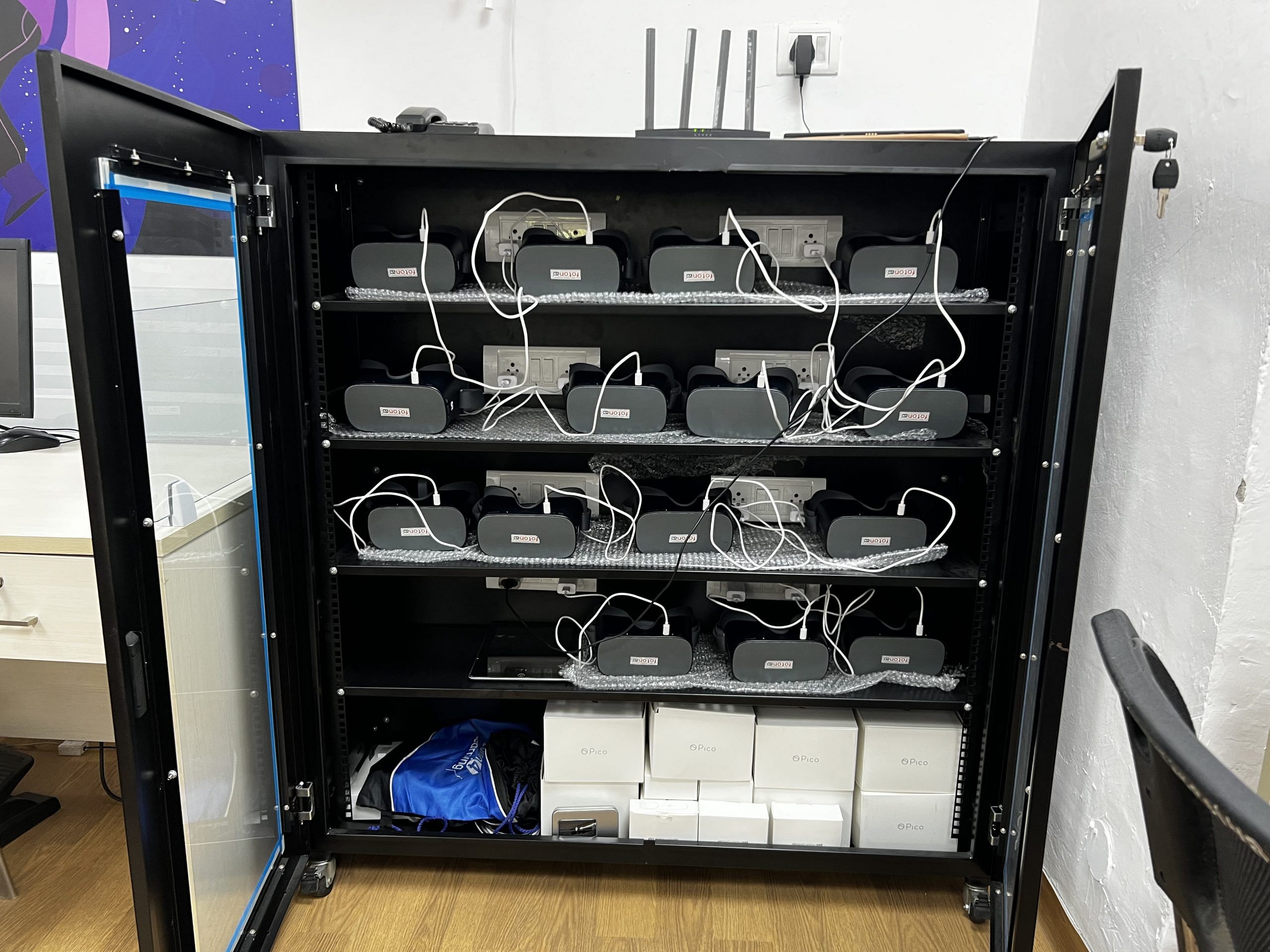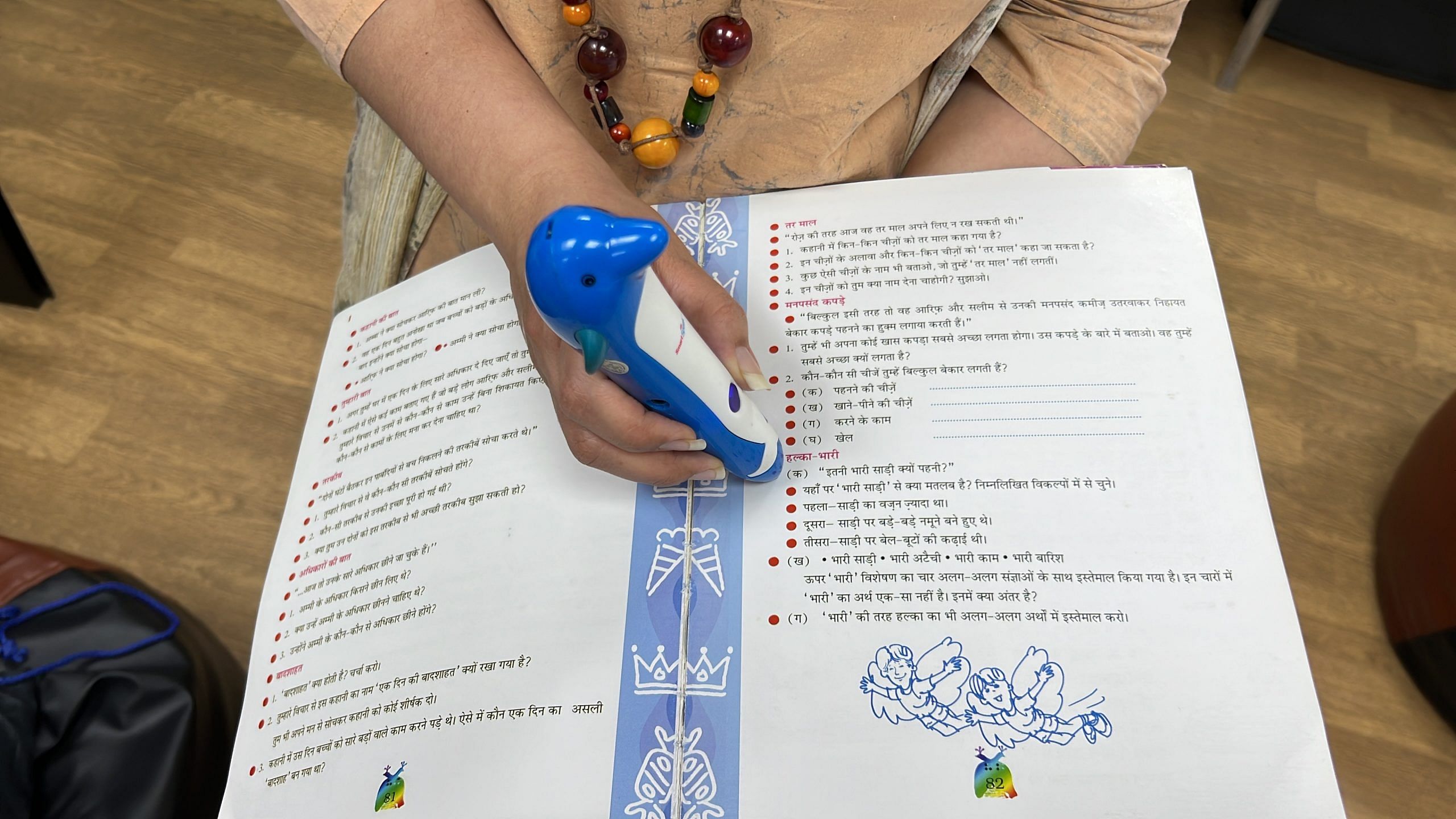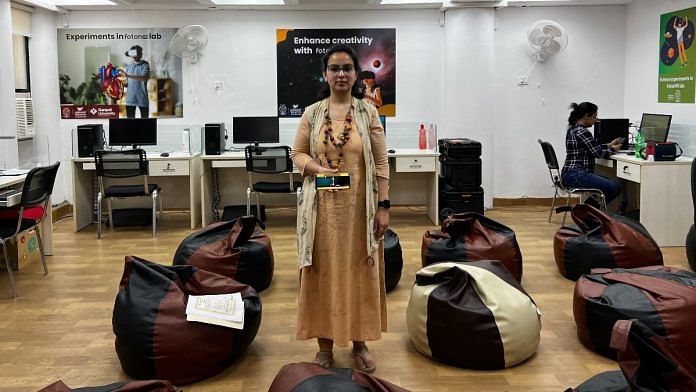New Delhi: An augmented reality device that provides an up-close view of the parts of a plant through a virtual dissection in 3D, interactive science experiments popping up on a computer screen on the scanning of a QR code — these are some of the latest digitised learning methods being developed by the National Council for Research and Training (NCERT) at its ‘virtual labs’.
With the central government pushing for digitised learning, the Central Institute for Educational Technology (CIET) — a constituent unit of NCERT under the Ministry of Education — has come up with the concept of ‘Virtual Labs for Teaching, Learning and Assessment’. These are to be equipped with modern augmented reality and virtual reality tools that can be used in classrooms across the country.
At present, there is only one such lab housed in the NCERT campus in the national capital.
According to NCERT officials, government representatives of Delhi, Jammu and Kashmir, Mizoram, Arunachal Pradesh and Uttar Pradesh have visited the virtual lab so far. The facility can be set up in all schools — government as well as private — and the content once created will be accessible to all on digital apps.
The NCERT, in collaboration with the Center for Development of Advanced Computing (C-DAC), Mumbai and Coimbatore-based Amrita University, has created content for various grades to be used via mobile phone apps like DIKSHA (Digital Infrastructure for Knowledge Sharing) and PM e-Vidya.
C-DAC is a leading R&D institution under the Ministry of Electronics and Information Technology, involved in design, development and deployment of advanced IT-based solutions.

Nidhi Adlakha, a senior academic consultant with the NCERT, who manages the lab along with a team of four people, told ThePrint that they are working with a focus on developing content for science.
“Developing virtual learning material for the subject of science is our primary focus. Since this is one subject that has abstract learning concepts which can be visualised with ease, content for many grades has been successfully made,” she said.
Not only this, the lab is also equipped with a Smart Speak device — a pen-like instrument that can scan the embossed logos on textbooks and read out learning content for visually challenged students.
Also Read: UGC launches common portal for faculty recruitment in central universities
Focus on science
Launched in 2022, the virtual lab has brought into effect the vision of the National Education Policy, 2020, which recommends creation of such laboratories so that all students have equal access to quality practical and hands-on experiment-based learning experiences.
The CIET has so far designed science material via augmented reality for classes 9 and 10, which can be accessed using the PM e-Vidya AR app. Meanwhile, virtual reality learning content has been developed for the subjects of maths, science, Hindi, English and environmental sciences up to class 5. For classes 6 to 10, the content has been developed for science only.

Students can also access the virtual lab created and made accessible on the DIKSHA portal — now a repository of over 200 science experiments for students between classes 6 and 12. They can not only scan and watch the experiments on their devices but also perform experiments in a guided fashion virtually.
Implementation & challenges
In line with the objectives of the NEP 2020, while the development of modern technology to aid learning is a step in the right direction, not all learning content has been digitised so far, according to NCERT officials. Another challenge that several states are facing is the additional expense to bring such devices to classrooms.
State government officials ThePrint spoke to said they are still working to bring the tech to their states.
Vijay Kiran Anand, director general of school education in Uttar Pradesh, said that the state is currently in the process of setting up an “ultra-modern studio” in Lucknow, which will be tasked with disseminating techniques aiding digital learning.
“A team has been assigned which is in charge of managing and creating content for the DIKSHA portal. We are planning to come up with a modern, state-of-the-art learning center in Lucknow very soon,” he said.
While in Haryana, an official from the state’s education department, who didn’t wish to be named, told ThePrint that the state might look for partners to help set up labs in schools.
“After equipping students in higher education with tablets, we now wish to bring tech to the primary grade classrooms. We are hoping to utilise the Samagra Shiksha funds and the PMShri school funds to set up labs [in schools] in association with private players,” the state government official said.
While Samagra Shiksha is an integrated scheme for school education, extending support to states from pre-school to senior secondary level, PMShri school is a also a central government scheme, launched last year, aiming to showcase the implementation of the NEP-2020 and emerge as exemplar schools over a period of time, and offer leadership to other schools.
Last year, the Haryana government reportedly distributed 5 lakh tablets to government school students of classes 10 to 12.
(Edited by Anumeha Saxena)



